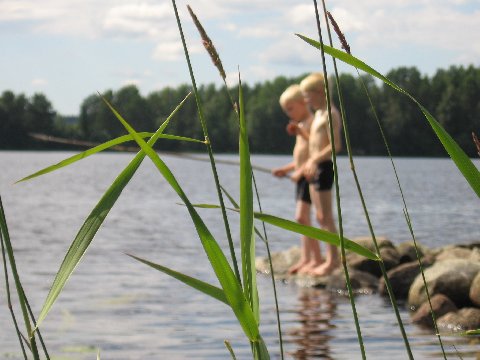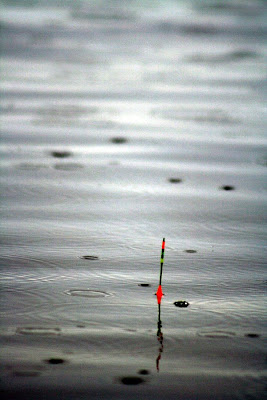The largest crater lake in Europe 33
The largest crater lake in Europe is in Huhtinniemi, cache 33. Here you can rest and roast sausages by the campfire. There is a clean beach and good locker rooms, as well as a village house where accommodation can be provided.
Let's go get a wormfish! Traditionally, a worm-fishing rod is made of young birch, aspen or rowan trees a few cm thick. The rod should be about 2 - 3 meters long and branches will also whittle off. The fishing rod made in this way is quite heavy. Some people therefore prefer banberry-based fishing rods from abroad.
In the late 1970s, fiberglass telescopic fishing rods became more common. They have a longer dimension than traditional rods and are lighter and shorter when transported, which has made them the main type of fishing rods.
Bait angling is usually a bait worm that is threaded into a fishing hook. The worm is thus pierced with a hook in its longitudinal direction. There is a small weight lead over the hook a few cm above which the line passes. Next up the line is float, which is often a styrofoam two-color floating device.


Euroopan suurin kraatterijärvi 33
Euroopan suurin kraatterijärvi ympäri-kierroksella olemme Huhtiniemessä, kätköllä 33. Täällä voi levähtää ja paistaa vaikka makkarat nuotiolla. Paikalta löytyy siisti uimaranta ja hyvät pukukopit sekä kylätalo, josta saa majoituksen tarvittaessa.
Mennään mato-ongelle! Perinteisesti mato-ongen vapa tehdään nuoresta muutaman sentin paksuisesta koivu-, haapa- tai pihlajapuusta. Vavan pituus saa olla noin 2 - 3 metriä ja myös oksat vuollaan pois. Tällä tavalla tehty onkivapa on melko raskas. Jotkut suosivat siksi banburunkoisia, ulkomailta tuotettuja onkivapoja. 1970-luvun loppupuolella lasikuituiset teleskooppi-onkivavat yleistyivät. Ne ovat ulottuvuudeltaan pidempiä kuin perinteiset vavat sekä keveämpiä sekä lyhyempiä kokoonpantuina kuljettaa, minkä vuoksi niistä on tullut pääasiallinen vapatyyppi.
Koho-ongessa on syöttinä yleensä kastemato, joka pujotetaan ongenkoukkuun. Mato siis lävistetään koukulla sen pitkittäissuunnassa. Koukun yläpuolella on muutama senttiä ylempänä pieni lyijypaino, jonka läpi siima kulkee. Siimaa ylöspäin mentäessä seuraavana on ongenkoho, joka on usein styroksinen kaksivärinen kelluke.